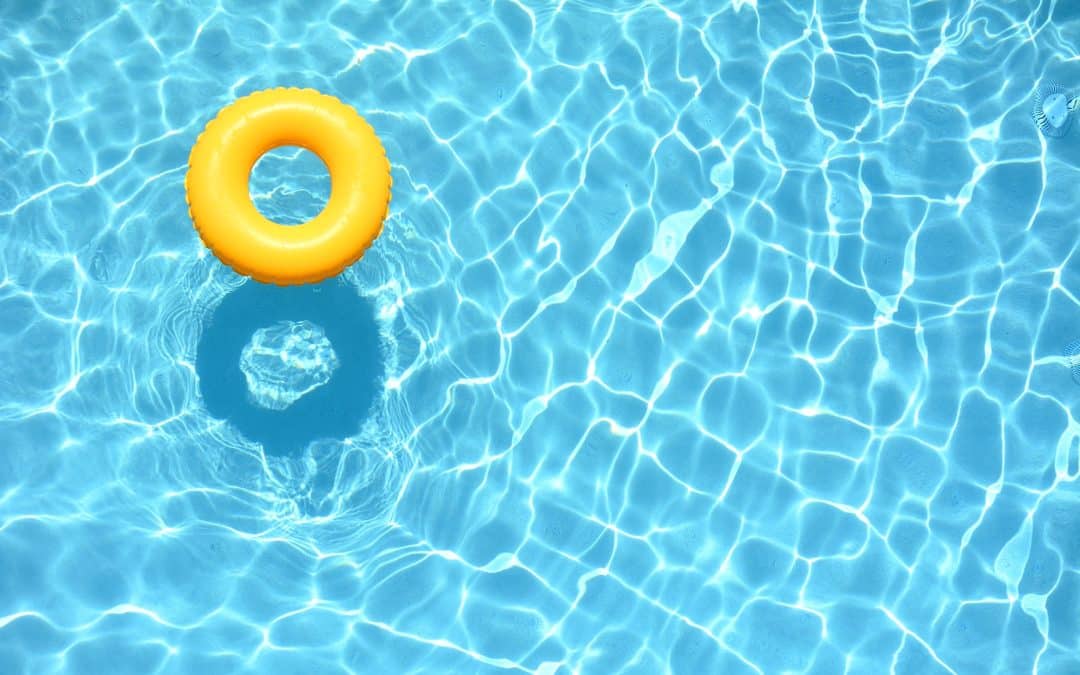TCT Group Pty Ltd v Polaris IP Pty Ltd [2022] FCA 1493
Date:
Court:
Judge:
14 December 2022
Federal Court of Australia
Burley J
Background
Polaris IP Pty Ltd (Polaris IP) is the owner of two certified innovation patents, 2020100485 and 2020102918 (the patents) relating to hinges for softly closing glass-panelled doors typically used to access swimming pools. Each of the patents is a divisional of a common parent application filed some three years earlier.
TCT Group Pty Ltd and Astral Hardware Pty Ltd (collectively, TCT) brought an action for revocation of the patents, as well as for unjustified threats of infringement and contraventions of the Australian Consumer Law (ACL) in relation to letters sent by Polaris’ solicitors to TCT and its customers. Glass Hardware Australia Pty Ltd (Glass Hardware), the exclusive licensee of the patents advanced a cross-claim alleging that TCT were liable for infringement on the basis of certain TCT hinges under the ‘Orion’ brand (Orion hinges).
Key Issues
Infringement
The only issue between the parties at hearing on infringement was whether the following integer was present in the Orion hinges: ‘wherein a portion of the first insert component is adapted to locate within the first cut-out’. The relevant issue was the interpretation of the phrase ‘adapted to locate’, and whether this claim required that a particular component be ‘tight fittingly receivable’.
Validity
The revocation action was based on lack of novelty, inventive step, sufficiency, and support.
First, TCT argued that the patents claimed material which extended beyond the scope of the parent application, and that pursuant to section 43(1) of Patent Act 1990 (Cth) (Act) they were therefore not entitled to a priority date earlier than the filing date of those divisional applications (external sufficiency). TCT argued that, despite the content of the parent and divisional specifications being largely the same, the disclosure in the parent was limited to a specific embodiment – specifically a dampener having a particular orientation and location – while the claims of the divisional patents were not so limited. TCT submitted that a person skilled in the art (PSA) could not make a product falling within the whole scope of either of the asserted patents based on the teaching in the parent without undue burden or the exercise of inventive skill. It was not in contention that if the patents were not entitled to the priority date of the parent, the claims would be anticipated by the earlier sale of Orion hinges. In the alternative, TCT asserted lack of novelty and inventive step in light of prior art published before the parent’s priority date.
Polaris submitted that the invention claimed in the patents is of a product framed by its physical characteristics using descriptive and functional language, that a PSA would understand upon reading that “the invention will work with substantially everything falling within the scope of the claim” and that the onus was on TCT to establish that this was not the case.
TCT further submitted that the disclosure in the asserted patents also did not provide a sufficiently clear disclosure of the hinge in other orientations as claimed as required by s40(2)(a) of the Act (internal sufficiency), and the conclusion should be the same as for external sufficiency.
Finally, TCT submitted that the patent claims were not supported by the disclosure in their specifications as required by s40(3) of the Act, largely for the same reasons they lack internal and external sufficiency.
Unjustified Threats and Contravention of the Australian Consumer Law (ACL)
TCT argued that four letters sent by Polaris’ solicitors to TCT and two letters sent to its customer constituted unjustified threats in contravention of s 128 of the Act. TCT alleged that the letters conveyed the representation that the Orion hinges infringed one of the patents and required the immediate and permanent cessation of their sale in Australia. Upon receipt of the letter, Mr Won, a representative of the customer gave evidence that he was concerned, passed it on to TCT, and ceased selling. He resumed sales shortly afterwards after receiving assurances from TCT that he would “sort things out”.
TCT also pleaded that the two letters sent to the same customer constituted amounted to misleading and deceptive conduct, in contravention of s18 the ACL. It sought declarations of contravention of the ACL, injunctive orders, orders for corrective statement, damages pursuant to the Act and damages pursuant to the ACL.
Polaris contended that even if patent infringement was not established, none of the letters constituted an unjustified threat because there was no evidence that any of the recipients regarded them as a threat. In response to the ACL claim, Polaris submitted that the letters amounted to a statement of opinion, not fact, and that there was no evidence that the recipients were misled or deceived.
Outcome
On construction, Burley J found that the phrase ‘adapted to locate’ should be understood to mean that the insert component is sized to have a shape relationship between it and the cut-out for the purpose of enabling the insert to be located for fitted in position but did not require the insert to be tight fittingly receivable. Burley J was satisfied that under this interpretation, the Orion hinges fell within the scope of the claims.
However his Honour also found that the patents were not entitled to claim priority from the parent, including because adjusting the dampener orientation beyond that disclosed in the parent would require significant research and development. Whilst his Honour accepted that disclosure of a single embodiment may be enough to satisfy the disclosure requirement across a range, this was not the case here in light of the remainder of the disclosure, the common general knowledge and the skills of the PSA. The patents were therefore anticipated by the sale of the Orion hinges. Although moot in light of this finding, Burley J also considered novelty and inventive step in light of prior art publications. He noted that TCT devoted insufficient time to these grounds, due to a ‘failure to recognise and abandon repetitive grounds of invalidity’. Nevertheless, his Honour found that all of the claims of one patent lacked an innovative step, and some lacked novelty over the published prior art.
Justice Burley found that three of the letters from Polaris’ solicitors amounted to unjustifiable threats because they, to some extent supported by Mr Won’s evidence, plainly conveyed to the reader the view of Polaris that the Orion hinges infringed the patents, and that unless the recipient complied with the demands made, Polaris would commence infringement proceedings. As was reiterated by Burley J, ‘a threat arises where the language, by direct words or implication, conveys to a reasonable person in the position of the recipient that the author of the letter intends to bring infringement proceedings against the person said to be threatened’. Burley J also then concluded that the same applied to similarly worded letters sent to TCT. However His Honour also noted that it was doubtful that an award of damages should be made, given the evidence the customer ceased sales only for one or two weeks.
In respect of the ACL claim, Burley J held that s 18 of the ACL was a ‘poor fit’, as the letters amounted to an assertion of opinion of solicitors on behalf of their client. His Honour held that it was not “consonant with the terms and policy underlying s 18 of the ACL that letters of demand should generally be inhibited on the basis that such errors are, after the event of litigation, actionable if…the opinion proved to be incorrect”.
Implications
This case is a stark reminder that letters of demand can constitute unjustified threats where the asserted patent is ultimately invalid. It may be helpful when alleging contraventions of s 128 of the Act to put on evidence of the recipient of the letters, as the Court took this into consideration. By contrast, it is clear from this decision that assertions of ACL contravention based on opinions in letters of demand will not be misleading or deceptive.
About Pearce IP
Pearce IP is a boutique firm offering intellectual property specialist lawyers, patent attorneys and trade mark attorneys to the pharmaceutical, biopharmaceutical and life sciences industries. Pearce IP is the 2021 ‘Intellectual Property Team of the Year’ (Lawyers Weekly Australian Law Awards) and was shortlisted for the same award in 2022. Pearce IP is ranked in IAM Patent 1000 and Managing IP (MIP) IP Stars, in Australasian Lawyer 5 Star Awards as a ‘5 Star’ firm, and the Legal 500 APAC Guide for Intellectual Property. Pearce IP leaders are well recognised as leading IP practitioners.
Our leaders have been recognised in virtually every notable IP listing for their legal, patent and trade mark excellence including: IAM Patent 1000, IAM Strategy 300, MIP IP Stars, Doyles Guide, WIPR Leaders, 5 Star IP Lawyers, Women in Law Awards – Partner of the Year, Best Lawyers and Australasian Lawyer 5 Star Awards, Women in Business Law Awards – Patent Lawyer of the Year (Asia Pacific), Most Influential Lawyers (Changemaker), among other awards.

Naomi Pearce
CEO, Executive Lawyer (AU, NZ), Patent Attorney (AU, NZ) & Trade Mark Attorney (AU)
Naomi is the founder of Pearce IP, and is one of Australia’s leading IP practitioners. Naomi is a market leading, strategic, commercially astute, patent lawyer, patent attorney and trade mark attorney, with over 25 years’ experience, and a background in molecular biology/biochemistry. Ranked in virtually every notable legal directory, highly regarded by peers and clients, with a background in molecular biology, Naomi is renown for her successful and elegant IP/legal strategies.
Among other awards, Naomi is ranked in Chambers, IAM Patent 1000, IAM Strategy 300, is a MIP “Patent Star”, and is recognised as a WIPR Leader for patents and trade marks. Naomi is the 2023 Lawyers Weekly “IP Partner of the Year”, the 2022 Lexology client choice award recipient for Life Sciences, the 2022 Asia Pacific Women in Business Law “Patent Lawyer of the Year” and the 2021 Lawyers Weekly Women in Law SME “Partner of the Year”. Naomi is the founder of Pearce IP, which commenced in 2017 and won 2021 “IP Team of the Year” at the Australian Law Awards.

Kate Legge
Special Counsel, Lawyer
Kate is an experienced IP and patent lawyer, providing IP leadership for pharmaceutical product development and commercialisation in global markets – from initial scoping through to post-launch.
She has developed and implemented global IP strategies over more than 15 years at multi-national pharmaceutical companies. She is an Australian qualified and registered legal practitioner, and has a Master’s degree in IP Law and a BSc in biochemistry.

